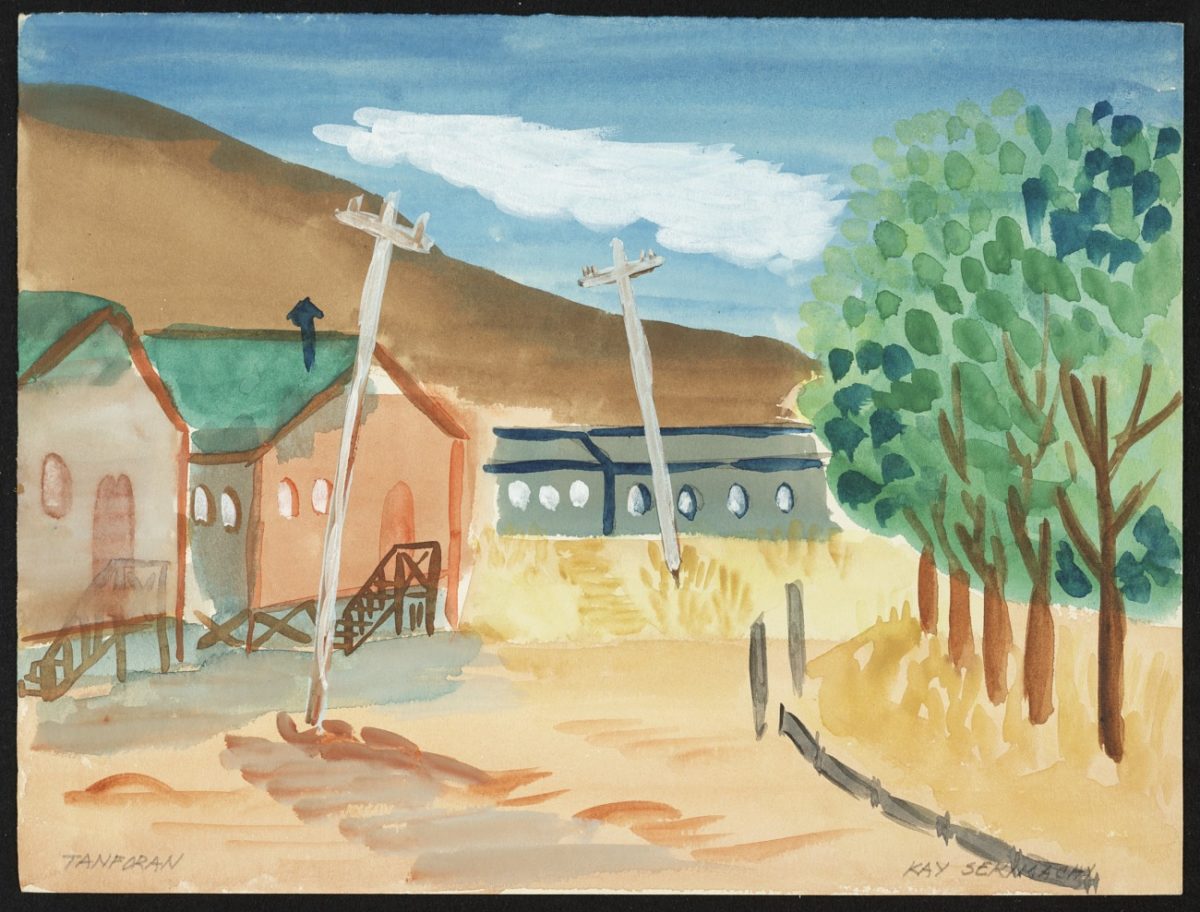Activity
Create an Abstract Dreamscape
In this activity, you will create an art piece inspired by the work of Bernice Bing.
Lesson: (1) Compare and contrast the experiences of Kay Sekimachi during her incarceration and the characters of "When the Emperor Was Divine" by Julie Otsuka, and (2) draw out themes about the treatment of American and Japanese cultures and the erasure of individuality during World War II.
This lesson can be used while teaching Otsuka's novel or as a stand-alone lesson.

After Japan bombed Pearl Harbor on Dec. 7, 1941, President Roosevelt issued Executive Order 9066. Signed on Feb. 19, 1942, the order gave the military broad powers to ban and forcibly evacuate any citizen on the West Coast, including California. While Executive Order 9066 applied to “any or all persons,” the newly established War Relocation Authority (WRA) began deporting Japanese immigrants (Issei) and incarcerating approximately 120,000 Americans of Japanese descent (Nisei). The WRA imprisoned them in 10 “internment camps” built in deserts and swamplands, including in Topaz, Utah. The Executive Order uprooted entire communities, as Japanese immigrants and Japanese Americans were forced to leave their homes and jobs.
In 1942, Kay Sekimachi was involuntarily relocated to Topaz, Utah, with her mother and three sisters. In an oral history interview, Sekimachi recalled her memories about her incarceration.
Julie Otsuka drew from her research, personal family experience, and background as a visual artist to write the semi-autobiographical historical fiction novel “When the Emperor Was Divine.” She tells a story about the incarceration of Japanese Americans through four points of view, including a boy and a girl around the same age as Sekimachi when she was incarcerated.
In this lesson, you will read an excerpt from Sekimachi’s interview and “When the Emperor Was Divine” and compare and contrast Sekimachi’s experiences with those of the characters in the novel to draw out themes about the treatment of American and Japanese cultures and the erasure of individuality during World War II.
This lesson can be used while teaching Otsuka’s novel or as a stand-alone lesson.
Reading Literature (Grades 9–10)
RL 9/10.1: Cite strong and thorough textual evidence to support analysis of what the text says explicitly as well as inferences drawn from the text.
RL 9/10.2: Determine a theme or central idea of a text and analyze in detail its development over the course of the text, including how it emerges and is shaped and refined by specific details; provide an objective summary of the text.
RL 9/10.4: Determine the meaning of words and phrases as they are used in the text,including figurative and connotative meanings; analyze the cumulative impact of specific word choices on meaning and tone (e.g., how the language evokes a sense of time and place; how it sets a formal or informal tone).
RL 9/10.5: Analyze how an author’s choices concerning how to structure a text, order events within it (e.g., parallel plots), and manipulate time (e.g., pacing, flashbacks) create such effects as mystery, tension, or surprise.
History and Social Science (Grades 10–11)
HSS 10.8.6: Discuss the human costs of the war, with particular attention to the civilian and military losses in Russia, Germany, Britain, the United States, China, and Japan.
HSS 11.7.5: Discuss the constitutional issues and impact of events on the U.S. home front, including the internment of Japanese Americans (e.g., Fred Korematsu v. United States of America) and the restrictions on German and Italian resident aliens; the response of the administration to Hitler’s atrocities against Jews and other groups; the roles of women in military production; and the roles and growing political demands of African Americans.
Excerpt of Kay Sekimachi’s interview (download PDF from the sidebar above)
Julie Otsuka, “When the Emperor Was Divine,” New York: Anchor Books, 2002, or download the PDF with selected passages from the sidebar above
Issei: (noun) a Japanese immigrant to North America
Nisei: (noun) a second generation Japanese American
Incarceration: (noun) the state of being confined in prison; imprisonment.
Executive Order 9066: issued on Dec. 7, 1941, the order gave the military broad powers to ban and evacuate any citizen on the West Coast.
Consider the following questions:
For more lesson plans based on Kay Sekimachi, visit this artist’s teacher packet.